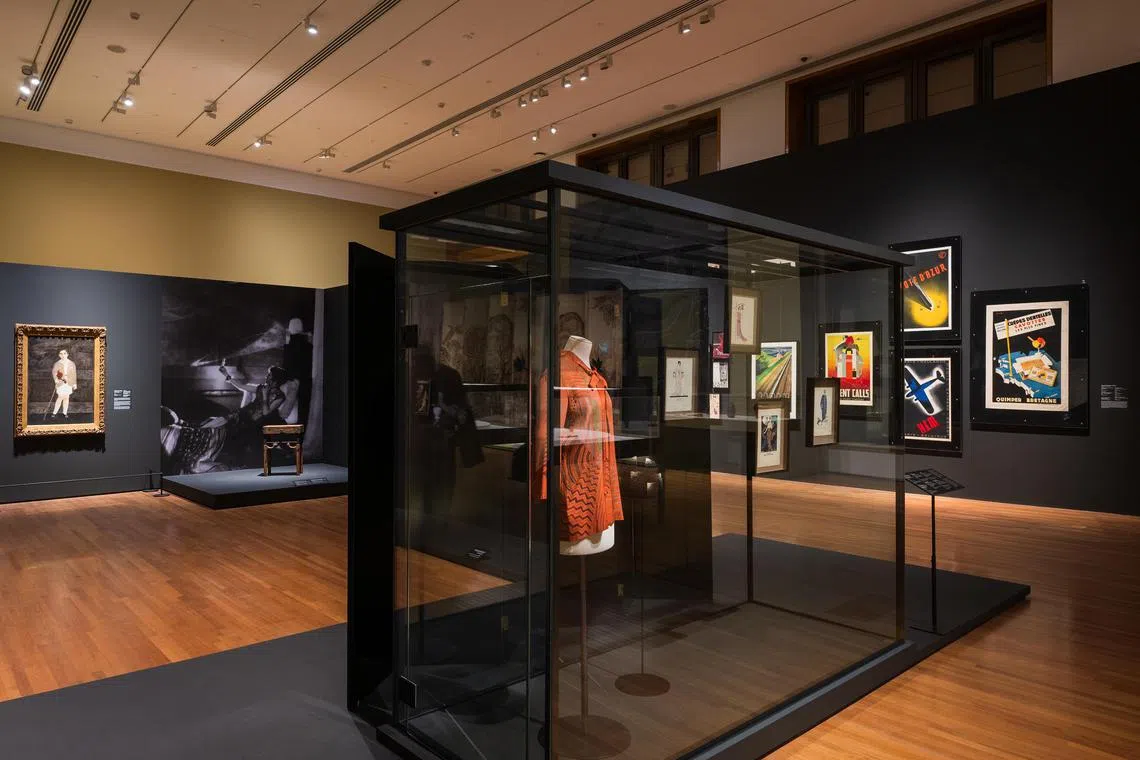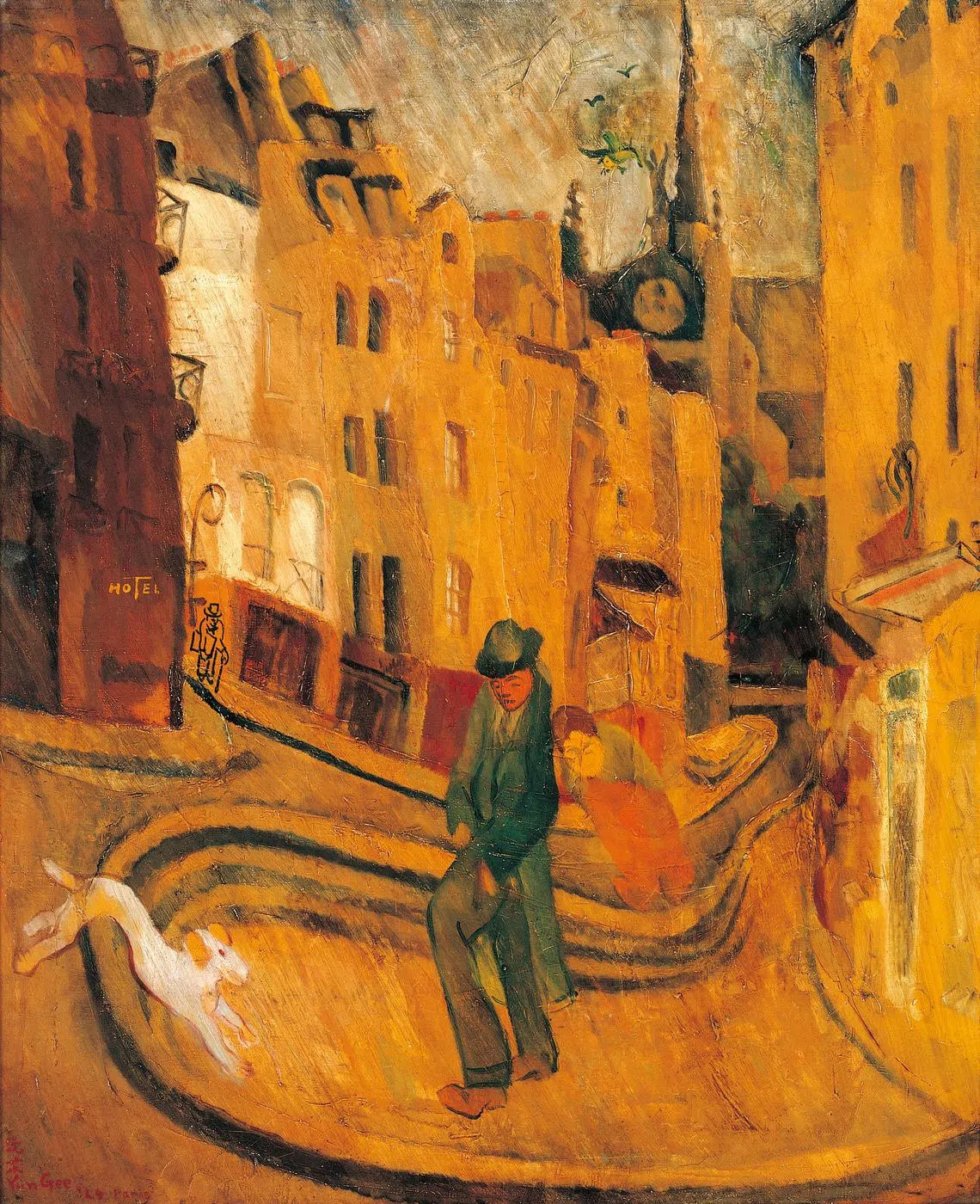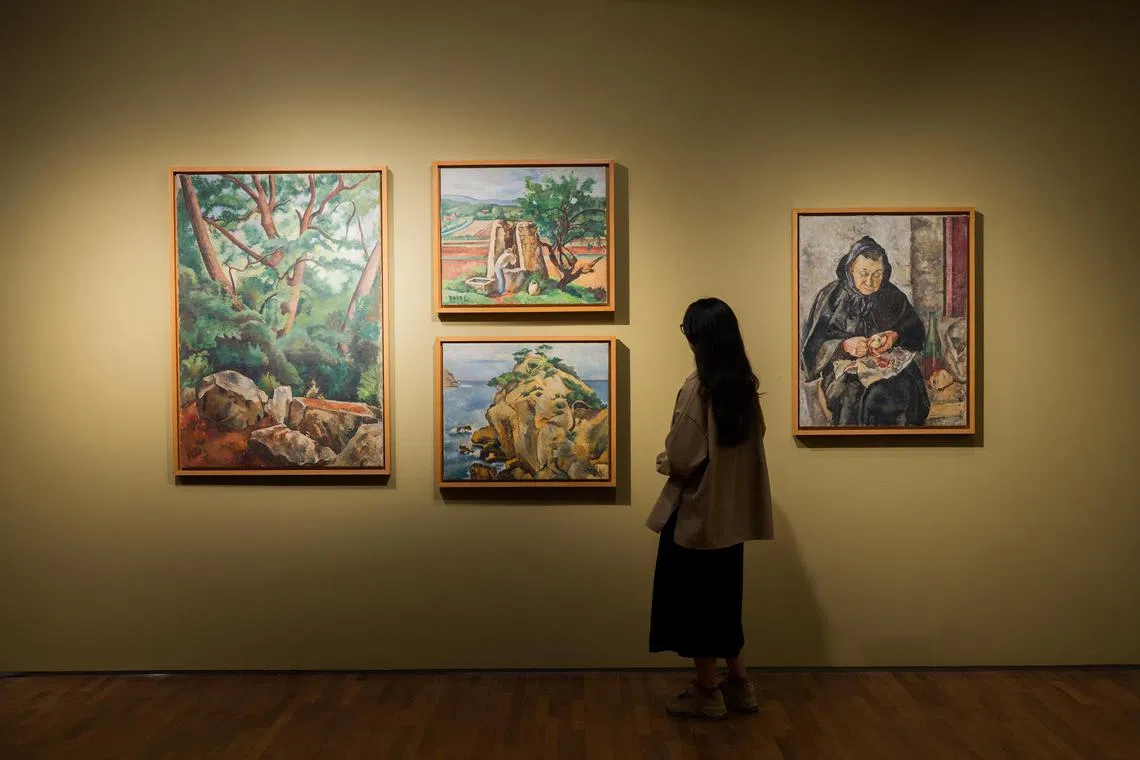How Asian artists fought for their place in Paris
A new exhibition explores how Asian artists navigated cultural and colonial bias in the City of Light from 1920s to 1940s

[SINGAPORE] Picasso. Hemingway. Joyce. Le Corbusier. Stein. Chagall. Miro. Lempicka. Calder. Giacometti. Modigliani. Fitzgerald. Josephine Baker. These legendary figures – and countless others – came to Paris in the 1920s and 1930s to be inspired, to create and to challenge the very foundations of art and culture.
“Back then, the sun of art shone only on Paris,” Marc Chagall once said of those incandescent years when the city was a crucible of ideas and experimentation. Artists flocked to its cafes, salons and studios in search of freedom, reinvention and the exhilarating chaos of modernism.
But much less talked about are the Asian artists who also made their way to the City of Light – painters, sculptors and designers who, far from Asia, wrestled with questions of identity, assimilation and artistic voice.
They included Tsuguharu Foujita, the Japanese painter whose fusion of Eastern linework and Western technique made him a star of the Parisian avant-garde; Georgette Chen, whose self-portraits and still lifes carried the cool elegance of both her French art school training and her own heritage; Liu Kang, who documented the streets of Paris before returning to South-east Asia to help pioneer the Nanyang style in the 1950s; and Le Pho, whose lush compositions married Vietnamese sensibility with French training.

These artists not only absorbed the language of modernism – they retranslated it in their Eastern visual vocabulary and, in doing so, left a mark on the city that history books leave out.
National Gallery Singapore’s first major exhibition of the year, City Of Others: Asian Artists in Paris, 1920s-1940s, turns the page on this lesser-known chapter of art history. Featuring nearly 200 works across three galleries, the show tells a story not only about art, but about identity, longing, exile and the strange alchemy that happens when East meets West.
It explores the question of how Asian artists – who were simultaneously romanticised and marginalised by the West – tried to find their voice among the clash of influences. The artists profiled here – from Japan, Vietnam, China, Korea, India and Indonesia – came to Paris to learn, express themselves and exhibit.
But the city didn’t just influence their art – it also questioned it, distorted it and sometimes tried to erase it.

The outsider’s struggle
The most successful of them all was Foujita, a Japanese artist known for his trademark white linen suits and Cleopatra-style haircut. He became a sensation in Paris for his nude paintings: women rendered with delicate lines inspired by Japanese ink techniques, but suspended in soft, dreamlike European compositions. In his works, East and West came together harmoniously.
Yet even at the height of his fame, Foujita was never fully accepted. To many, he remained an outsider.
Others, such as Chen and Liu, were less successful in navigating the Parisian art scene. They found genuine success only when they returned to South-east Asia, where their fusion of European technique and Chinese tradition were well received. Japan’s Itakulla Kanae and Sumiko, China’s Yun Gee and Sanyu and Vietnam’s Mai Trung Thu were among those who also found success.

Still, others failed miserably, quietly consigned to producing derivative work – imitating European styles in the hope of acceptance and diluting their own voices in the process.
As senior curators Phoebe Scott and Cai Heng observed, Asian artists sometimes found more commercial success by holding fast to traditional techniques, such as Chinese ink or Vietnamese lacquer techniques – as European collectors took more interest in their distinct aesthetics. (The exhibition’s other curators are Lisa Horikawa, Teo Hui Min and Roy Ng.)
Some Asian artists succeeded in breaking into salons (juried exhibitions). Le Pho, for instance, was awarded a silver medal for his painting L’Age heureux at the 1932 Salon des Artistes Francais in Paris – and eventually achieved fame and financial success in the 1950s. Many, however, were largely dismissed or overlooked.

Romance and racism
The exhibition offers not just paintings but also archival context: photos, posters, catalogues and film footage from the period. A particularly entrancing section called Stage & Spectacle shows black-and-white clips of Asian dancers and musicians performing on Parisian stages. They include India’s Uday Shankar (brother of sitar player Ravi Shankar), Indonesia’s Raden Mas Jodjana and Japan’s Komori Toshi.
One news clip describes Indian musical instruments as “bizarre” – an adjective that would be called out for its racism today.

Yet, through these challenges, City of Others achieves something quite remarkable: It reshapes the narrative by centring the margins. It rewrites the story of modern art to be not just one of white men and women in Montmartre – but of migrant artists who crossed continents, cultures and colonial power structures, all in the hope of putting their artworks on the same walls as those of Picasso, Chagall, Miro and Lempicka.
They were once footnotes; now they’re a story.
City Of Others: Asian Artists in Paris, 1920s-1940s runs at National Gallery Singapore till Aug 17, 2025.
Decoding Asia newsletter: your guide to navigating Asia in a new global order. Sign up here to get Decoding Asia newsletter. Delivered to your inbox. Free.
Copyright SPH Media. All rights reserved.


